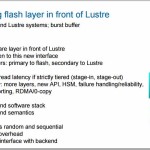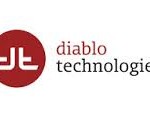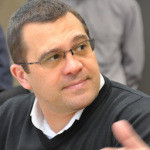We caught up Jeff Bonwick from DSSD to learn more about their exciting storage technology for HPC. “Our mission statement was four words: fastest storage on earth. That was our singular goal from day one, which gave the team incredible focus and clarity. Whenever we had to make a tradeoff between performance and something else, performance always won. Always. And it just so happens that when you aim for performance, density comes along for the ride because the more flash chips you have working in parallel, the faster it goes.”
Call for Papers: International Conference on Massive Storage Systems and Technology
The 32nd International Conference on Massive Storage Systems and Technology (MSST 2016) has issued its Call for Participation & Papers. The event takes place April 30 – May 6 in Santa Clara, CA. “The Program Committee requests presentation proposals on issues in designing, building, maintaining, and migrating large-scale systems that implement databases and other kinds of large, typically persistent, web-scale stores (HSM, NoSQL, key-value stores, etc.), and archives at scales of tens of petabytes to exabytes and beyond.”
Video: On the Role of Flash in Large-Scale Storage Systems
Nathan Rutman from Seagate presented this talk at the LAD’15 Conference. “So why is a spinning disk company talking about Flash? Last year, Seagate acquired Avago LSI’s flash division. We now have an array of flash-based storage. So I have nothing against Flash. This presentation is really on: Where does Flash make sense? I also have a personal agenda because I hate the term “Burst Buffer.” Everyone says “Burst Buffer” instead of saying “Flash.” It drives me crazy. So I’m going to explain what a Burst Buffer is and what it is not.”
Diablo Rolls Out All-Flash DDR4 Memory
Today Diablo Technologies announced the launch of Memory1, the first all-flash server system memory technology.
Jeff Layton on How 3D Flash is Changing the Market
“For a period of time, it didn’t look like flash drives were going to decrease in price very much. Flash cell technology is limited to around 20nm because of cost and complexity considerations, but manufacturers have found ways around the limitation. Rather than decrease the features size, they now store more bits per cell (TLC) and have started to create 3D flash chips. This combination, plus the growth in flash storage sales, has driven down the price per gigabyte.”
Diablo Technologies to Resume Shipments of Memory Channel Storage after Court Ruling
This week Diablo Technologies announced that the company will resume shipments of its MCS based chipsets. The news comes on the heels of ruling by a federal jury in favor of Diablo in a lawsuit brought by Netlist, Inc.
Hyped Technologies that Won’t Shine in 2015
“100% Flash in the Datacenter? It won’t happen any time soon. Many (most?) tier one workloads will be moved to flash of course, but data is adding up so quickly that it’s highly unlikely you will be seeing a 100% datacenter any time soon. It will take a few years to have about 10/20% of data stored on flash and the rest will remain on huge hard disks (cheap 10+TB hard disks will soon be broadly available for example).”









